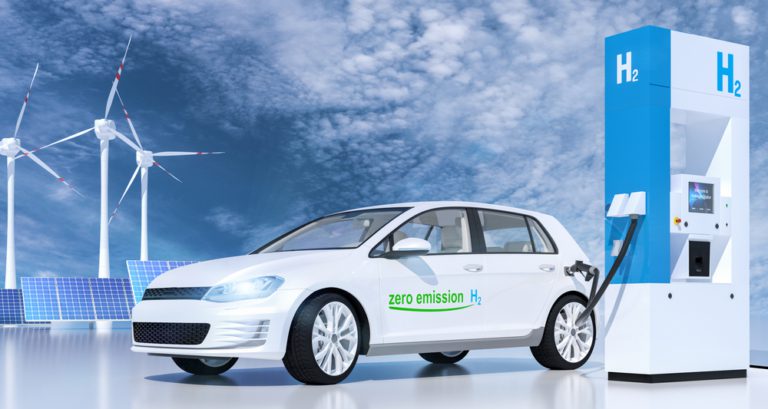
The hydrogen propulsion method is nothing new. It first gained traction in the early 2000s but has been supplanted in recent years by other alternatives, such as EVs, while liquefied natural gas (LNG) and compressed natural gas (CNG) are also gathering traction – at least in the European market.
But for hydrogen uptake, Europe notably trails the world-leading Asian market, with eight times more hydrogen-fueled passenger cars in Korea alone than the entire EU. Japan meanwhile, aims to have over 800,000 hydrogen vehicles on the road by 2030.
Why then, is Europe lagging in hydrogen car adoption? Will we see more euro-centric manufacturers committing to hydrogen vehicles? Will EMEA countries transition from having hydrogen-fueled vehicles concentrated in the transport and logistics sector to the everyday motorist?
Domenico Sicilia, Clean Energy Business Development Director for Dover Fueling Solutions (DFS), examines the current state of play.
The Asian market
When considering alternative fueling options, it can often be a “chicken or egg” scenario. Will adoption follow infrastructure, or vice versa?
Statistically, Asia has much more advanced infrastructure than Europe for hydrogen fuel, which can accelerate adoption. As of 2022, China has the most hydrogen refueling stations in the world with 250.
South Korea makes an interesting case study here as the growth of the hydrogen sector has largely been underpinned by government funding. Indeed, the country is pursuing a hydrogen-based economy, which is seen as a key driver of economic growth and capable of generating $43 billion of economic growth and creating 420,000 jobs.
To facilitate this, subsidiaries, loans and tax benefits have been in place for the hydrogen sector since 2019 and $2.34 billion invested within the sector since 2012.
The European model
If Europe is to catch up, similar government spending programs are needed across the region; however, most countries are currently pouring money into electric vehicles (EVs) as opposed to hydrogen. That being said the continent plans to have 1.3 million public chargers in place by 2025 and 2.9 million by 2030.
Indeed, EU member states would all need to combine their efforts to compete with the powerhouses of China and Korea. China is currently the largest hydrogen producer in the world – boasting capacity of 40 million tons – and is likely to remain a key industry in the future.
It would appear that the European country most notably blazing a trail is Germany, which is set to invest heavily in hydrogen refueling with an emphasis on heavy freight transport.
A call-for-action was recently sent to the French Government urging them to invest in Hydrogen to reduce the country’s carbon footprint while providing a cheap, abundant fuel source to combat spiraling energy costs. France aims to have a similar volume of refilling stations as Germany by 2030.
Despite lagging behind Germany currently, France is also pursuing strong interest in developing the technology and accompanying network.
The cash injection, which will see the country’s hydrogen network triple in size, will reposition the country as the “backbone” of European hydrogen.
How about commercial transport?
Unlike passenger cars, battery-powered vehicles are not yet considered strong enough to be used in heavy goods vehicles, where diesel has long been the prevailing fuel.
Hydrogen does carry strong potential for commercial transport. It is often praised as a great energy carrier with a small amount able to release a lot of energy to drive the vehicle.
However, the first hydrogen trucks to hit European roads were again Asian in origin with Hyundai trucks being rolled out across the continent. Indeed, eight out of the 10 biggest global hydrogen truck companies are based in Asia.
By comparison, hydrogen truck manufacturing in Europe remains in its infancy with leading brand Volvo only in the testing and development stage.
Are we there yet?
It’s clear that Europe trails behind countries such as Japan and South Korea in both the passenger and commercial transport hydrogen markets. While hydrogen does show some potential for commercial transport, it wouldn’t appear that cars for the everyday motorist will surface in the mainstream any time soon.
This was underlined by VW – the continent’s largest motors manufacturer – when they announced that they had no plans to produce a hydrogen-fueled passenger car due to poor infrastructure.
Presently, the only fuel cell electric vehicles (FCEV) cars available on the continent are the Toyota Mirai and the Hyundai Nexo, which – clocking in at £50,000 and £70,000 respectively – are more within the realms of higher earners.
Hydrogen will no doubt play its part in the decarbonisation mix, but the extent of that will only really become apparent when infrastructure improves. The road to net zero never did run smoothly.
